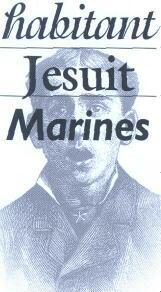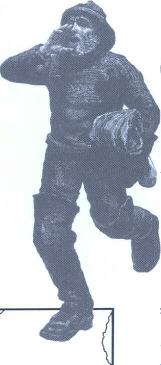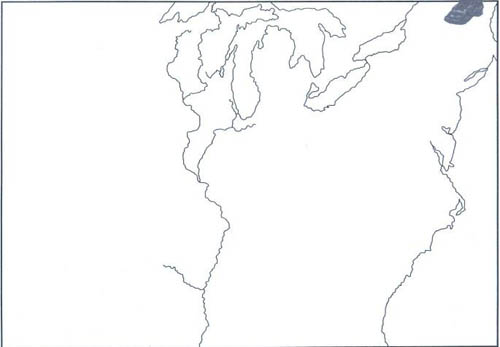|
C U R R I C U L U M M A T E R I A L S
|
|
Tonia Faloon
|
Overview
Main Ideas
European exploration and colonization shaped the character of the Americas and Illinois. Dramatic changes occurred not only in the lives of the Europeans who came to the New World, but also in the lives of the native peoples they encountered and the African slaves who were unwilling immigrants to the Americas. This lesson examines the unique experience of the French who explored inland North America, developed a relationship with Native Americans through the fur trade and missionary efforts, and opened Illinois to further European settlement. Many French settlers moved away from their Illinois villages as territorial control shifted to the British.
5
Connection with the Curriculum
This unit can be used to teach Illinois history or American history, and it includes activities that develop skills in geography, writing, and basic economics. These activities may be appropriate for Illinois Learning Standards for Social Science 15.D.4b, 16.A.5a, 16.C.3a, 16.D.3a, 16.D.4a, and 17.A.3a.
Teaching Level
Grades 9-12
Grades 7-8 with modification such as group
work
Materials for Each Student
• The narrative portion of this article
• Colored pencils
• Access to a U.S. atlas
• Copies of the activity handouts
Objectives for Each Student
• Describe the journey of Marquette and Jolliet and use an atlas to pinpoint key locations in the journey.
• Explain and discuss the role of the French in exploring and developing the Illinois Country.
• Synthesize historical information about French colonial life into a letter written from the point of view of a French settler

SUGGESTIONS FOR
TEACHING THE LESSON
|
Assign the narrative portion of this article. Younger students could read with the help of the teacher. Discuss unfamiliar terms such as habitant, Jesuit, and Marines. This lesson on the French could be placed into the context of exploration and settlement by other European groups such as the English and Spanish. Characteristics of the nature and location of explorations and settlements made by these three nations could be compared in a chart format to introduce this in-depth look at the French.
Developing the Lesson
• Assign Activity 1. Students may work individually or in groups, depending on ability level and the availability of atlases or reference maps. When students have completed the activity, discuss the goals of the French in North America and the importance of the journey of Marquette and Jolliet in opening the Illinois Country to French settlement. Ask students to speculate about what the explorers might have found as they traveled,
especially during their return trip on the Illinois River, and how their discoveries might have helped achieve French goals. Discuss the immediate and long-term consequences of French exploration on Native Americans who lived in the Illinois Country.
• For Activity 2, the teacher may wish to have the students work individually or in groups to brainstorm and develop their idea lists. With additional research, students could expand their roles to include other people besides farmers who might have lived in one of the French villages in Illinois. Students could finish their letters outside of class, and these could be shared with the class upon completion.
Concluding the Lesson
Discuss the reasons for the decline of French dominance in Illinois and shifts of control to the British and eventually the Americans. Students could use the article to identify key differences between French culture and American culture, which dominated Illinois after 1790.
Extending the Lesson
• Have students research another French explorer, Rene Robert Cavelier, Sieur de La Salle, and use maps to trace his journeys through the Illinois Country and beyond.
• Have students examine the lives of Native Americans and Africans in Illinois at the time of French settlement. The Illinois State Museum's website "At Home in the Heartland" provides excellent comparison of the lives of Native Americans, French settlers, and African slaves. This material can be found at www.museum.state.il.us/exhibits/athome/1700/sideby/index.html
• Have students research French governmental policies regarding settlements in New France, and explain how those policies contributed to the relative lack of success for the French in North America.
• Have students compare life in American colonies held by France, Spain, and Great Britain using a chart or other graphic organizer. Areas for comparison could include the following: goals in the Americas, economic pursuits, government, and daily life.
Assessing the Lesson
The activities provided can both be used for assessing students' skills and their understanding of the material. In addition, a traditional test or quiz could be developed based on the information presented in the narrative and the activities.
6


Background: The French government established several goals for its colonies in the New World. The French wanted to explore the territory in the interior of North America in hopes of finding the fabled "Northwest Passage" leading through the continent to the Pacific Ocean. They also wanted to spread Christianity to the native peoples living in North America. With these two goals in mind, officials in New France chose a young fur trader and explorer named Louis Jolliet to lead an expedition accompanied by Father Jacques Marquette, a young Jesuit priest who was skilled in several Indian languages.
The Journey: The expedition began at the Mission of St. Ignace, which is located near the Straits of Mackinac (where Lake Michigan and Lake Huron are joined). The explorers then traveled by canoe down the western coast of Lake Michigan to Green Bay, and continued into the Fox River. They had to portage or carry their canoes and supplies a short distance to the Wisconsin River. They followed the Wisconsin River to the Mississippi, and traveled down that river more than 1,000 miles before deciding to turn back near the point where the Arkansas River joins the Mississippi River. On the return trip, the explorers paddled against the current of the Mississippi River to the Illinois River, near present-day Alton. They followed the Illinois River to the Chicago River, then returned via Lake Michigan to the Mission of St. Ignace.
Map Activity: Using an atlas, trace the route of Marquette and Jolliet as they explored the Illinois Country Use a solid blue line to show water travel, and a dotted red line to show overland portages. Use arrows to indicate the direction of travel for both the initial journey and the return trip. Label the rivers traveled by the explorers. Also, make a key to accompany your map.
Marquette and Jolliet Explore the Illinois Country


Directions: Using the historical information in the narrative as a reference, assume the role of a French habitant (a settler and farmer in the New World) and write a letter to your relatives in France. In your letter, you should include factual information to describe your daily life as a French habitant. Also, cite specific events and facts about the time period, and explain how your character reacts to them. Although your letter will be fictional, it should be based on fact. Your letter must be dated, so be careful with your sense of chronology. Do not refer to things that would not yet have happened at the time you dated the letter.
Additional resources for research on French colonial life can be found on the Internet. One helpful website is the Illinois State Museum's website, "At Home in the Heartland," which can be accessed at www.museum.state.il.us/exhibits/athome/. Click on the link to "1700-1800," and use the information located in the section "At Home on the French Frontier." Another useful site is the Illinois Historic Preservation Agency's website at www.state.il.us/HPA/departments/historicsites.htm. This site has photographs and descriptions of French colonial architecture in Illinois. Sites available for research include Fort de Chartres, Cahokia Courthouse, and Fort Kaskaskia. Once a site has been chosen, click on "More Information" at the end of the introduction in order to access additional material.
Idea list: Answer the questions below to begin developing facts to include in your letter.
1. What is your name?
2. What is the name of your village in the Illinois Country?
3. What are your farming practices? What kind of crops do you grow and what animals do you tend?
4. Besides farming, what other economic activities take place in and around your village?
5. What is the role of slavery in the local economy?
6. What is the role of religion in your life?
7. What does your home look like? What kind of clothing, furniture, and other possessions do you have?
8. What do you do during your leisure time?
9. How do you relate to the Native Americans in your area?
10. What kind of government does your village have?
11. Describe a historical event and discuss your reaction to it. Speculate on how this event might affect your life. Possible events could include:
• The French and Indian War (1754-1763) and the Treaty of Paris (1763),
• The removal of the Jesuit priests (1763),
• The American Revolution (1776-1783), and the arrival of George Rogers dark (1778)

Click Here to return to the Article
8
|

